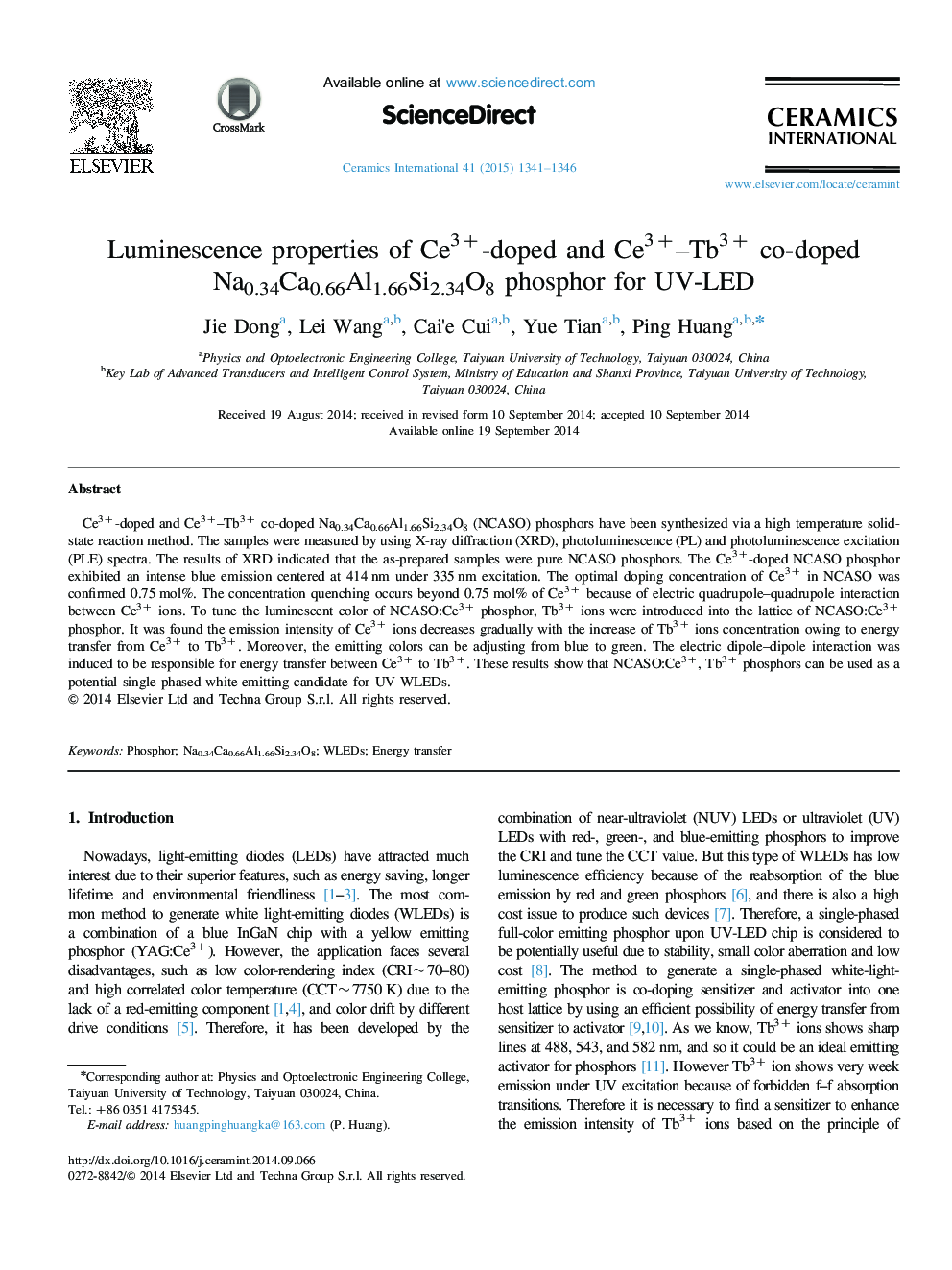| Article ID | Journal | Published Year | Pages | File Type |
|---|---|---|---|---|
| 1460835 | Ceramics International | 2015 | 6 Pages |
Ce3+-doped and Ce3+–Tb3+ co-doped Na0.34Ca0.66Al1.66Si2.34O8 (NCASO) phosphors have been synthesized via a high temperature solid-state reaction method. The samples were measured by using X-ray diffraction (XRD), photoluminescence (PL) and photoluminescence excitation (PLE) spectra. The results of XRD indicated that the as-prepared samples were pure NCASO phosphors. The Ce3+-doped NCASO phosphor exhibited an intense blue emission centered at 414 nm under 335 nm excitation. The optimal doping concentration of Ce3+ in NCASO was confirmed 0.75 mol%. The concentration quenching occurs beyond 0.75 mol% of Ce3+ because of electric quadrupole–quadrupole interaction between Ce3+ ions. To tune the luminescent color of NCASO:Ce3+ phosphor, Tb3+ ions were introduced into the lattice of NCASO:Ce3+ phosphor. It was found the emission intensity of Ce3+ ions decreases gradually with the increase of Tb3+ ions concentration owing to energy transfer from Ce3+ to Tb3+. Moreover, the emitting colors can be adjusting from blue to green. The electric dipole–dipole interaction was induced to be responsible for energy transfer between Ce3+ to Tb3+. These results show that NCASO:Ce3+, Tb3+ phosphors can be used as a potential single-phased white-emitting candidate for UV WLEDs.
